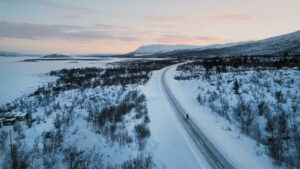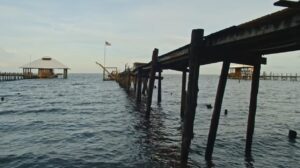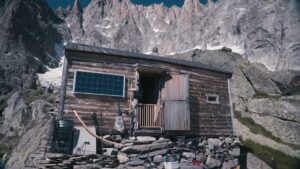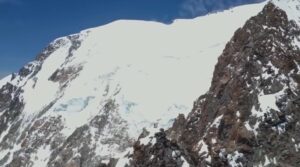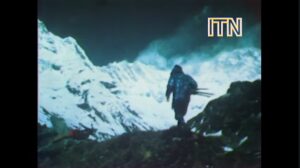In 1954, the Academy gave the award for Documentary Short Subject to the first film in Walt Disney’s People & Places series. Titled The Alaskan Eskimo, the film stitched together events in the daily lives of indigenous Alaskan people.
While the language and viewpoints expressed are outdated, the footage represents a remarkable historical document of daily life in an Alaskan community over 70 years ago.
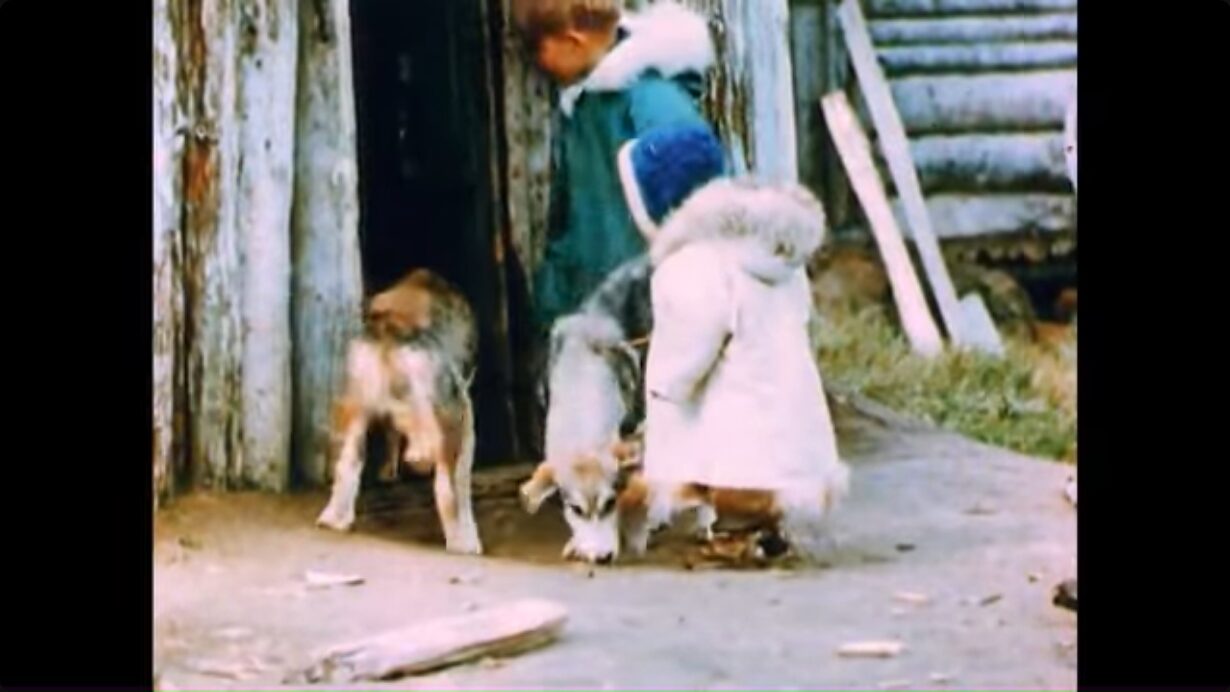
Two children with young sled dogs in their village. Photo: Screenshot
Summer business
The film crew visited in the warmest months and documented the preparations for the coming hunts and colder seasons. We see men building houses, and women stitching watertight coverings for new kayaks.
When the whalers return, the entire community comes together to haul in and flense the carcass of a beluga whale. We see children enjoying muktuk, slices of the skin and blubber of the whale. It’s a very traditional food for groups all across the Arctic Circle, and an excellent source of vitamin C. “It has a taste like beech nuts, er, they say,” our mid-Atlantic 1950s narrator adds with typical dryness.

The indigenous Alaskan community where the film takes place. Photo: Screenshot
Winter underground
The film crew stays on as the winter chill comes in, and the camera moves inside. The home we saw being built in summer, half buried in the earth, is now finished and in use. The people of the village are not idle in the long, cold hours, but busy themselves preparing useful items.
Men carve knives and harpoons, while women sew waterproof raincoats out of dried whale intestines and strands of grass. The people of the village also prepare seal skins for mukluk shoes. The children snatch the cut-off scraps to chew on, grinning widely at the camera.

‘His tools are crude, his weapons primitive,’ says the narrator, who couldn’t make a knife that good if his life depended on it. Photo: Screenshot
A break in the weather occasions an outburst of activity. Dog teams set out to replenish stores and gather wood before the full fury of winter returns. We watch as the men harness dogs, load driftwood onto sleds, and conduct a reindeer hunt.
Hunters and fishermen, the narrator reminds us, are in constant danger. If a blizzard sets in while they are so far away from home, they are likely to die. The weather does turn, but the hunter we are following manages to make it back to the village just in time.

The dogs huddle together against the coming chill. Photo: Screenshot
Spring is sprung
As winter draws to a close, the villagers prepare for the celebration of spring. Dressed in their best clothes, they come together in the meeting house. There, the filmmakers record a festival celebrating the end of winter. Men dance in masks representing the gods of the sky, the sea, and the land, in order to honor and thank them, accompanied by drumming and singing.

Dancers wear masks representing various gods, accompanied by singing and drumming. Photo: Screenshot
The ceremonial transitions into the farcical as the dancers switch their masks for caricature masks, intended to represent fellow villagers. The audience laughs, rocking to the quick tempo of the drums, as another winter ends.

